얼마나 오래 a 48 전압 배터리가 지속됩니다?
집을위한 에너지 저장 시스템을 계획 할 때, 특히 태양열 또는 백업 전원의 경우, 48 볼트 플랫폼은 인기 있고 효율적인 표준입니다. 자연스럽게 발생하는 주요 질문은입니다, "실제로 48V 배터리가 실제로 얼마나 오래 지속 될까요??" 대답은 전압 만 있지 않습니다; 배터리 용량과 사용 방법에 따라 결정됩니다..
48V 배터리의 런타임은 전적으로 AMP 시간에 따라 다릅니다 (아) 또는 킬로와트시 (kWh) 용량 등급 및 전력 추첨 (와트에서) 실행중인 가전 제품의. 대용량 배터리, 48V 200AH 장치처럼, 동일한 하중에서 48V 100AH 장치의 두 배나 지속됩니다.. 최신 48V 벽 마운트 배터리 시스템은 필요에 맞는 적절한 용량을 쉽게 선택할 수 있도록합니다..
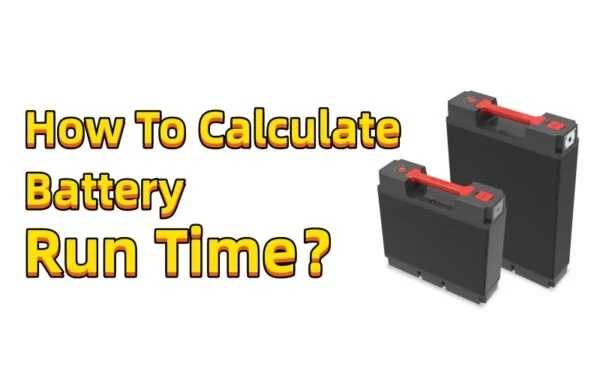
~에 Gycx 솔라, 우리는 신뢰할 수있는 48V 에너지 시스템 설계를 전문으로합니다., 오래 지속되는 힘. 런타임을 계산 하고이 강력한 배터리에 대한 다른 중요한 질문에 답하는 방법을 세분화합시다..
48V 100AH 배터리를 충전 해야하는 태양 전지판 수?
48V 100AH 배터리를 태양 전지판과 페어링하는 것은 진정한 에너지 독립의 열쇠입니다.. 그러나 배터리가 매일 전액 충전을 받도록 태양열 어레이를 어떻게 크기를 조정합니까??
안정적으로 청구하기 위해 a 48100AH에서 (이는 4.8 kWh) 배터리 전형적인 날에, 일반적으로 대략 태양 전지판 배열이 필요합니다. 1.5 kw to 2.5 kW. 이것은 약으로 번역됩니다 4 에게 6 현대의, 고효율 400W 태양 전지판. 정확한 숫자는 특정 위치에 따라 다릅니다, 올해의 시간, 그리고 지역 날씨 패턴.
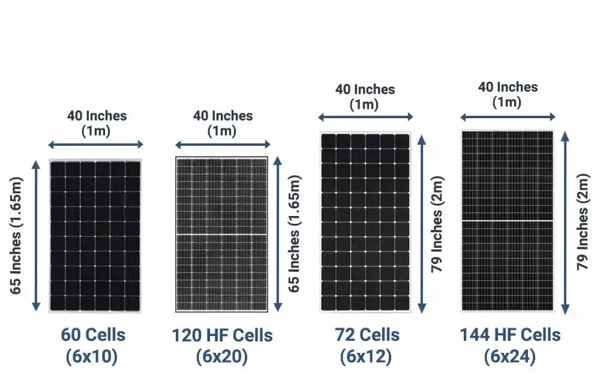
더 깊이 다이빙하십시오: 다른 지역 기후
올바른 태양열 어레이 크기를 결정하는 방법은 다음과 같습니다:
- 보충하는 에너지: 48V 100AH LFP (리튬 철 포스페이트) 배터리 저장 4.8 KWH의 에너지. 매일 완전히 재충전합니다, 시스템 손실을 커버하려면이 금액과 약간의 추가를 생성해야합니다..
- 피크 일요일 시간 (PSH): 이것은 계절마다 다른 중요한 요소입니다. 일본에서, 당신은 극복 할 수 있습니다 4.5 여름에는 PSH입니다 2.5-3 겨울에는 맑은 날에 PSH. 우리는 보수적 인 연중 평균을 기반으로 시스템을 설계합니다 (예를 들어, 3.5 - 4 PSH) 일년 내내 안정적인 충전을 보장합니다.
- 시스템 손실: 우리는 패널 열로 인해 손실 된 에너지를 설명합니다, 배선, MPPT 충전 컨트롤러의 효율성 (일반적으로 15-25% 총 손실).
- 계산:
- 필요한 태양 광 발전 (kW) = 에너지가 필요합니다 (kWh) / (피크 일요일 시간 X 효율 계수)
- 예:
4.8 kWh / (3.5 hours x 0.80 efficiency) = 1.7 kW (1700 Watts) - 이것은 의미합니다
1700W / 400W per panel ≈ 4 to 5 panels. 우리는 종종 흐린 날에 버퍼를 제공하기 위해 추가 패널을 권장합니다..
이것은 조심합니다, 위치 별 크기 조정은 밤이나 다음 태풍 시즌을 통해 배터리에 전원을 공급할 준비가되도록합니다..
100AH 48V 리튬 배터리의 백업 시간은 얼마입니까??
구체적으로합시다. 100AH 48V 리튬 배터리가 있습니다. 정전 중 실제로 몇 시간의 백업 전력을 기대할 수 있습니까??
ㅏ 100AH 48V 리튬 배터리 총액을 제공합니다 4,800 와트시 (와트시) 또는 4.8 킬로와트시 (kWh) 에너지 저장의. 백업 시간은이 총 에너지가 기기의 전력 소비로 나눈 것입니다.. 예를 들어, a 480-와트 거의로드 10 시간 또는 라이터 200-와트 로드 24 시간.
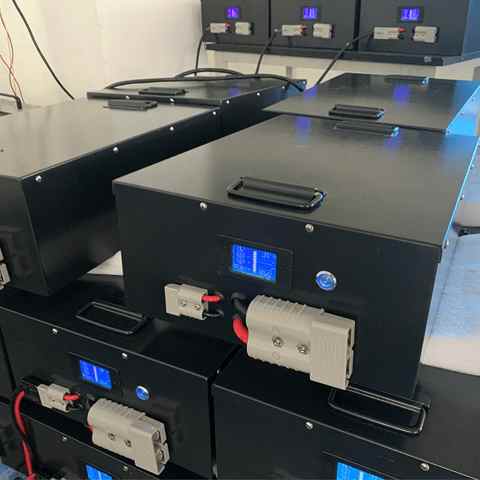
더 깊이 다이빙하십시오: 백업 런타임 계산
간단한 수학은 다음과 같습니다:
실행 시간 (시간) = 총 에너지 (와트시) / 당신의 부하 (와트)
가정의 실용적인 시나리오를 살펴 보겠습니다:
- 대본 1: 필수 부하 (대략. 300여): 중단 동안, 효율적인 냉장고를 실행하고 있습니다, 여러 LED 조명, 업데이트를위한 인터넷 라우터, 그리고 전화를 충전합니다.
4,800 Wh / 300 W = 16 hours
- 대본 2: 적당한 하중 (대략. 800여): 당신은 텔레비전과 밥솥을 Essentials에 추가합니다..
4,800 Wh / 800 W = 6 hours
이것이 현대적인 이유입니다 48v 벽 마운트 배터리 시스템은 너무 인기가 있습니다. 단일 4.8kWh 모듈은 필수품에 대한 우수한 백업을 제공합니다. 그리고 그것들은 모듈 식이기 때문입니다, 더 큰 마음의 평화를 위해 백업 시간을 두 배로 늘리기 위해 두 번째 장치를 쉽게 추가 할 수 있습니다.. Gycx Solar에서, 우리는 당신이 기대하는 백업 시간을 얻기 위해로드 분석을 수행하는 데 도움이됩니다..
리튬 배터리가 앉아 나쁘게됩니다?
배터리 시스템이 있지만 잠시 동안 사용하지 않으면 어떨까요?? 리튬 배터리가 보관 중에 앉아서 나빠질 수 있습니까?, 사용되지 않았습니다?
모든 배터리, 리튬이온을 포함한, 사용하지 않더라도 시간이 지남에 따라 천천히 저하됩니다.. 이것을 불립니다 달력 노화. 하지만, 현대 LFP (리튬 철 포스페이트) 배터리는 매우 안정적입니다. 그들은 또한 매우 낮습니다 자가방전율 (1-3% 매월), 앉아있는 동안 그들은 거의 요금을 잃지 않는다는 것을 의미합니다. 스토리지에서 장수를 보장하는 열쇠는 멋진 장소 a 부분적인 전하 상태 (약 40-60%).
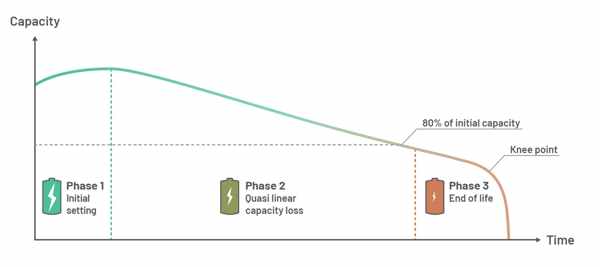
더 깊이 다이빙하십시오: 달력 노화 vs. 자제력
유휴 상태에서 배터리 연령의 두 가지 방법을 아는 것이 중요합니다.:
- 자제력: 이것은 일시적이고 느린 청구 손실입니다. 배터리를 재충전하여 복원 할 수 있습니다. LFP 배터리의 낮은 비율은 1 년 넘게 저장할 수 있으며 여전히 상당한 비용을 지불합니다..
- 달력 노화: 이것은 영구입니다, 몇 년에 걸쳐 발생하는 돌이킬 수없는 용량 손실, 사용에 관계없이. 이 프로세스의 속도는 두 가지 요인에 크게 영향을받습니다.:
- 온도: 열은 가장 큰 적입니다. 뜨거운 환경에 저장된 배터리는 쿨에 저장된 것보다 훨씬 빠르게 나이가 들어옵니다., 기후 제어 공간.
- 요금 상태: 장기 보관용, 리튬 배터리를 유지합니다 100% 전액 세포에 스트레스를 받고 노화를 가속화합니다. 그것을 보관합니다 0% 또한 위험합니다. ㅏ 40-60% 충전은 저장에 이상적인 스트레스 상태입니다.
올바르게 저장된 LFP 배터리는 오랫동안 앉아 건강하고 서비스 준비가 가능합니다..
충전하지 않을 때 리튬 배터리가 발사 할 수 있습니다?
배터리 안전이 가장 중요한 고려 사항입니다. 우리는 종종 충전과 관련된 화재에 대해 듣습니다, 그러나 고품질 일 수 있습니다 리튬 배터리1, 홈 스토리지 시스템에서 하나와 마찬가지로, 그냥 앉아있을 때 불을 붙잡 으세요, 충전 또는 배출되지 않습니다?
그것은 극히 드 rare 고품질을 위해, 사용하지 않을 때 자발적으로 불을 붙잡기 위해 손상되지 않은 리튬 배터리. 그러한 사건은 거의 확실하게 기존이 필요합니다 내부 단락, 일반적으로 둘 중 하나에 의해 발생합니다 제조 결함 또는 사전 신체적 손상 배터리에. 그렇기 때문에 엄격한 품질 관리와 다음과 같은 안전한 화학을 갖춘 평판이 좋은 제조업체에서 배터리를 선택합니다. LFP 너무 중요합니다.
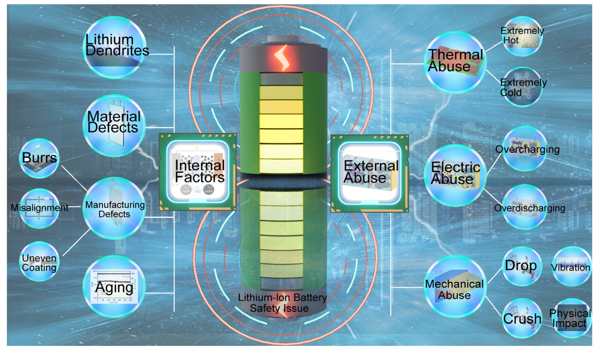
더 깊이 다이빙하십시오: 위험을 이해하고 완화합니다
다음은이 주요 안전 주제의 고장입니다:
- 원인 (내부 단락): 배터리 셀 내부에는 분리기에 의해 분리 된 양극과 음수 재료의 초박형 층이 있습니다.. 이 레이어가 터치하면 화재가 시작될 수 있습니다. 이것은 미세한 제조 결함이나 배터리가 떨어 졌을 때 발생할 수 있습니다., 치열한, 또는 구멍을 뚫었습니다, 내부 손상을 유발합니다.
- 품질 관리의 역할: 평판이 좋은 배터리 제조업체는 깨끗한 객실 제조 및 다단계 테스트에 많이 투자합니다. (엑스레이 및 노화 테스트를 포함합니다) 잠재적 결함으로 세포를 감지하고 스크리닝합니다. 이것은 최초이자 가장 중요한 방어선입니다..
- LFP 안전 장점: 이것은 중요합니다. LFP (리튬 철 포스페이트) 화학은 본질적으로 다른 리튬 이온 유형보다 화학적으로 더 화학적으로 더 안정적입니다. (전화 및 랩톱에서 발견 된 NMC 또는 LCO와 같이). LFP 셀이 실패하더라도, 폭력적인 화재로 분출하기보다는 담배를 피우고 안전하게 실패 할 가능성이 훨씬 높습니다..
- 보호 시스템의 중요성: 전문가 48v 벽 마운트 배터리 배터리가 아닙니다; 베스입니다. 강력한, 보호 인클로저는 내부 단락으로 이어질 수있는 물리적 손상을 방지하도록 설계되었습니다.. 내부 BMS는 또한 지속적인 모니터링 계층을 제공합니다..
고객의 안전이 최우선 과제입니다. 그렇기 때문에 우리는 세계적 수준의 제조업체의 LFP 배터리를 독점적으로 사용합니다.. 우리는 그들의 엄격한 품질 관리와 LFP 화학의 고유 한 안전이 당신의 가정에 설치된 시스템에 대한 최고 수준의 보호와 마음의 평화를 제공한다는 것을 알고 있습니다..
48V 배터리는 강력하고 효율적인 에너지 저장 시스템의 중추입니다.. 얼마나 오래 지속되는지 이해하는 것은 용량에 따른 간단한 계산입니다. (아) 그리고 당신의 부하 (여). 현대의 48v 벽 마운트 배터리 시스템, 안전하고 오래 지속되는 LFP 기술로 제작되었습니다, 신뢰할 수있는 것을 제공하십시오, 유지 보수가 적습니다, 에너지 독립성 및 백업 전력을위한 장기 솔루션.
48V 배터리 시스템 설계에 대한 질문이있는 경우, 태양열 배열 크기, 또는 집에서 가장 안전하고 신뢰할 수있는 배터리 솔루션을 탐색하고 싶습니다., GYCX Solar의 전문가 팀이 여기에 있습니다.. 전문 상담을 보려면 저희에게 연락하십시오! Gycxsolar는 귀하의 상담을 환영합니다, 우리의 전문가들은 당신에게시기 적절하고 만족스러운 솔루션을 제공 할 것입니다.
리튬 배터리의 위험을 탐색하면 사용 및 저장에 대한 정보에 근거한 결정을 내릴 수 있습니다.. ↩
